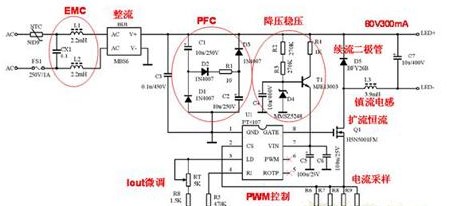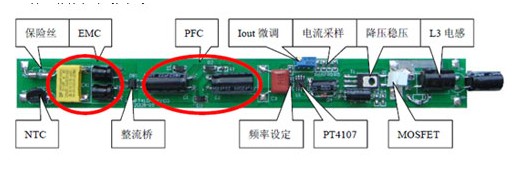The insiders know that LED fluorescent lamps will become a new generation of energy-saving and environmentally-friendly lighting, but now the country produces at most hundreds of thousands of LED fluorescent lamps every year, and most of them are exported. There are very few domestic uses. In fact, the most important problem is the price problem. An ordinary energy-saving fluorescent light is fixed for more than ten yuan, and one LED fluorescent tube has hundreds of pieces. Therefore, the current fluorescent tubes are mainly based on commercial lighting. Because commercial lighting will take into account energy conservation, environmental protection, image, government support and so on.
But now the quality of LED fluorescent lamps is uneven, and some even have the same lifespan of fluorescent lamps, which can't be used. As users know more and more about LED fluorescent lamps, LED fluorescent lamps manufacturers need to solve the following problems. :
First, the constant current driving problem of the driving power supply. At present, most of the constant current sources are mostly constant currents (that is, a plurality of parallel light strings share a constant current source. Because of the difference in resistance between the LED beads, the current of each string is different, any one LED If the lamp fails, it will affect the current of other strings, so those with large current will have more serious light decay and their service life will be greatly shortened.)
Second. The problem of heat dissipation. This is one of the core issues in the life of LED fluorescent tubes. Because most manufacturers now use the built-in power supply to follow the wind, they can be directly replaced with fluorescent tube brackets, so that the heat emitted by your entire power supply and the heat emitted by the LED itself are dissipated in an aluminum housing, and they are all inside the fluorescent tube. How to deal with the heat?
Third. The problem of the life of electrolytic capacitors in the power module? Even if we use ultra-long-life electrolytic capacitors, working at high temperatures, its life cannot be balanced with the life of the LEDs. But how to provide a good working temperature to achieve the best service life?
Fourth. Can the power module's instability and product safety certification pass? At present, most manufacturers on the market use high-voltage non-isolation schemes and high-voltage counterattack Tianguan power schemes. Because the built-in volume is very limited (to be placed inside the lamp), it is generally difficult to implement the power supply during design. stable. At present, various countries have stricter safety certifications, and it is difficult to pass the safety certification of high-voltage power supply.
In fact, the main source of the above problems is still generated by the built-in power supply!
Here are some of the performance aspects of fluorescent tubes designed by professionals who have built-in power supplies and external power supplies:
The power of LED fluorescent lamps is divided into built-in and external. The so-called built-in means that the power supply can be placed inside the lamp. The biggest advantage of this built-in type is that it can be made to directly replace the existing fluorescent tube without any modification. So the built-in shapes are made into a strip shape so that they can be inserted into a semi-circular tube.
The following two types of built-in, non-isolated and isolated types are introduced.
Non-isolated constant current power supply
Non-isolated means that there is a direct connection between the load and the input, so there is a danger of electric shock due to the touch load.
The most widely used is the non-isolated direct step-down power supply. That is, after the AC power is rectified, DC high voltage is obtained, and then the buck circuit and the constant current control are directly used. Its electrical schematic is shown below:

Figure 1. Circuit diagram of a non-isolated constant current source
The main technical features of this non-isolated power supply: wide voltage input range from 18V to 450V, constant current output; frequency jitter to reduce electromagnetic interference, random source to modulate the oscillation frequency, which can expand the audio energy spectrum, extended The energy spectrum can effectively reduce the in-band electromagnetic interference and reduce the difficulty of system-level design. It can be used for linear and PWM dimming to support hundreds of 0.06W LED driving applications. The operating frequency is 25KHz-300KHz, which can be set by external resistors.
The advantage of a non-isolated constant current source is that it is simple and has a high index. Its output current can be determined by the number of LEDs connected in series. But in most cases, its output current should not be too large and the output voltage should not be too high. For example, 264 low-power LEDs are connected in 22 series, 12 series in parallel, each string is 20mA, a total of 240mA. The volume can also be made very small, usually in a strip shape for placement in a T10 or T8 tube. If the current per string is 30mA, 12 is 360mA. In some non-isolated power supplies, it can't be realized. In order to keep the total current 240mA, it can only be changed into 8 series parallel. But if the total number of LEDs does not change, the number of series connections is increased to 33. At this time, the total voltage will increase by 108.9V. But usually the maximum allowable output voltage of this non-isolated constant current source is 80V. Only the original 22 strings can be maintained, so the total number of LEDs can only be 176. Even with 30mA, the total lumens may not meet the requirements.

Figure 2. Outline photo of a non-isolated buck constant current source
Typically, the efficiency is between approximately 88-90% and the power factor is between approximately 0.88 and 0.92.
However, this non-isolated power supply has some limitations because the non-isolated power supply introduces the high voltage of the AC power source to the load end, which may cause electric shock. In general, the insulation between the LED and the aluminum heat sink is also insulated by the thin film of the printed circuit board of the aluminum substrate. Although this insulating layer can withstand 2000V high voltage, sometimes the burr of the screw hole will cause so-called creepage, making it difficult to pass CE certification.